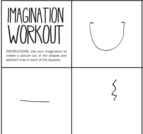
Use imagination and creativity to create pictures out of abstract squiggles and marks.
- Subject:
- Arts Education
- Material Type:
- Activity/Lab
- Author:
- Paging Super Mom
- Date Added:
- 03/25/2020

Use imagination and creativity to create pictures out of abstract squiggles and marks.
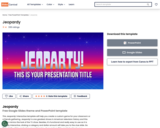
This is a great already pre made with slide transitions and animations if you are making study games, etc! All you need to do is plug in your own questions and content!
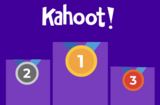
Inscrivez-vous gratuitement pour accéder à une multitude de jeux quiz interactifs, auxquels les élèves assistent par médium d'un appareil électronique. Elles/ils adorent les Kahoot!
« CRÉER: Il ne faut que quelques minutes pour créer un jeu d'apprentissage ou un quiz sur n'importe quel sujet, dans la langue de votre choix.
HÉBERGER ET PARTAGER: Hébergez une session en direct en diffusant les questions sur grand écran ou partagez un jeu avec des joueurs à distance.
JOUER: Maintenant, place au jeu ! Rejoignez un kahoot à l'aide du code PIN fourni par l'hôte et répondez aux questions sur votre appareil. »

Kahoot! is a game-based platform that makes learning awesome for millions of people all over the world. Sign up to create and play fun quiz games!
Having students make quizzes on Kahoot! is a great way for them to extend their learning and benefit the entire class!
Kahoot! is an excellent formative assessment tool. You can give feedback to your students after each question as you play. Make learning a game show...your students will never have so much fun being assessed.

"Use Kialo to help students get to the core of the issues they’re discussing To put their knowledge into action.
To sharpen their critical reasoning skills
To demonstrate their understanding
To engage constructively with each other
Take your classroom discussions online, break down complex subjects for students, and shake it up with new types of assignments."
This education version is free for teachers to use!
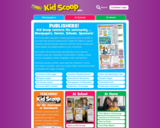
Kids Scoop is News magazine that features standards-aligned activity packs for kids K-5.
Kid Scoop News magazine is available as a free PDF or print newspaper delivered to classrooms. This magazine can be shared with students to read at home or in the classroom. After students have read through the magazine, teachers might have them share out to the class something they learned or had a question about. This could kick off a discussion and might even lead to further research into some of the more interesting topics.
Beyond the magazine, teachers will find dozens of downloadable activities and lesson plans -- some free, some paid -- to slot into lessons. Many of these would work well as ways to kick off or cool down a class period. The resources for home-school connections offer helpful tips for communicating with parents about ways kids can use and benefit from Kid Scoop News at home.
The "Kids" section includes the following topics: Answers, How to Draw, Just Plain Weird, Puzzles, Scrub Squad, Write On
The "Teachers" section includes: Next on Kid Scoop, WWC Topics, Teacher Guide, Teacher Scoop, Standards, STEM News
The "Parents" section includes: Crafts, Recipes, Try This At Home

Newsela provides high-interest, printable news articles from a wide range of subject areas. Teachers can adjust the reading level of news articles to meet the needs of students. Within each article, power words are identified. Students can click on these and see the definition in student-friendly language. Newsela also provides writing prompts and questions about the articles. You can sign up for free access to the end of the 2019-20 school year. Although the site is American, there are lots of applicable news stories that align with Saskatchewan curricula and context.
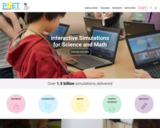
Over 150 simulations, ready to use and ready to bring concepts to life for your students in Math & Science!

If you love Pictionary or Pictionary Air, you've come to the right place. This is especially true if you're looking for random Pictionary words so you can play the game. The Random Pictionary Word generator is helpful if you don't have a gameboard and cards around, but you'd still like to play the game with your friends. Our free online Pictionary word generator does exactly that by letting you and your friends play the game even if you don't have the game cards handy. If you're looking for more fun games, please also check out our Never Have I Ever questions and our Would You Rather questions.

Games like tic tac toe, Dots and boxes, connect 4, gomoku, battleship, and many more that are very quick to learn and best way to pass time when you are with friends or family.

Try out this fun online version of the popular game "Taboo". This version offers lots of game cards, an outline of the rules, a score sheet and some suggestions for how to play.
The game cards are meant to be played however you would like to. Follow the suggested rules that you can alter or come up with on your own. The game cards can be used to play Taboo online or to play any other sort of word game. There is even the opportunity to submit your own words. Enjoy!
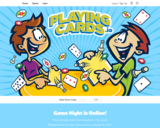
This website that allows you to play classic card games with up to 6 friends on your browser. All you have to do is share the “room link” to your friends, and you’re good to go. The games include:
Backgammon
Checkers
Escoba – similar to the Italian game Scopa
Crazy Eights
Euchre
Go Fish
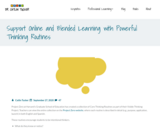
Project Zero at Harvard’s Graduate School of Education has created a collection of Core Thinking Routines as part of their Visible Thinking Project. Teachers can view the entire collection on the Project Zero website (https://pz.harvard.edu/thinking-routines#CoreThinkingRoutines), where each routine is described in detail (e.g., purpose, application, launch) in both English and Spanish.
These routines encourage students to be intentional thinkers.
What do they know or notice?
What is their perspective or position on an issue or idea?
How can they support their position or thinking?
What do they wonder? What are they confused about?
How has their thinking changed? What caused that change?
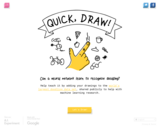
Google Quick, Draw! tells you what to draw and then uses artificial intelligence to try to guess what you're drawing. Fun!
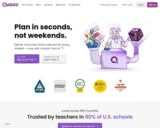
"Free self-paced quizzes to review, assess, and engage—in class and at home."
This is a great formative assessment tool that makes learning and reviewing feel like a game.
This tool is great for students when working individually (compared to Kahoot! and Quizlet where the class plays together). Kids could do them at a station, centre or even for homework.
Turn your assessment into a game!
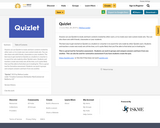
Anyone can use Quizlet to study and learn content created by other users, or to create your own custom study sets. You can also share sets with friends, classmates or your students.
The best way to get started on Quizlet as a student or a teacher is to search for sets made by other Quizlet users. Students and teachers create new study sets all the time, so it's quite likely that you'll be able to find what you're looking for.
This is a great tool for formative assessment. Students can work in groups and compare answers and learn from one another.
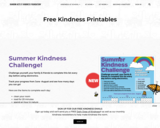
Find amazing resources for Random Acts of Kindness including:
RAK Calendars for each month
Posters
Bookmarks
Bingo
Colouring
& more!
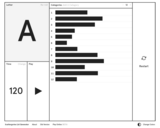
Looking for an online version of Scattergories? Check out this great tool that generates a list, allows you to create and join online rooms, provides you with the rulebook and a chat feature, has you vote on opponents answers and promises piles of fun.
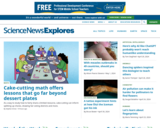
"Teachers can use the site as in-class reading material to supplement units in science, math, and language arts. The readings are streamlined, age-appropriate versions of articles on the adult Science News site and provide helpful tools for tackling the task of reading scientific texts. The Going Deeper link for each article takes students to a related article on the companion Science News site with more detailed information. Kids can also use the simpler readings on Science News for Students as support articles to build their basic understanding before moving on to more complex text of the same topic. If you scroll to the bottom of the articles, many of them contain “Power Words” and their definitions. Reviewing the words in advance can help kids better understand the text. Some articles also contain questions for kids to answer while reading." (Common Sense Media)
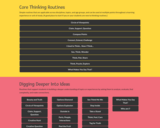
This amazing toolbox organizes Thinking Routines into categories.
When you open a routine, go to the section for Resource Links to access an explanation/lesson on how to use this tool.
Tools or strategies are divided into these categories (a few examples are listed but there are many more):
*Core thinking routines (E.g., See, think, wonder, What makes you say that?)
*Digging Deeper Into Ideas (E.g., Outside in, Layers, Fact or fiction?)
*Introducing and exploring ideas (Lenses, Step in - step out - step back)
*Objects and systems (Creative hunt, Parts-people-interactions)
*Perspective taking (Options explosion, True for who?)
*Perspectives, controversies and Dilemmas (Tug for truth, Sticking points, 4Cs)
*Possibilities and analogies (3-2-1 bridge, Creative quesitons)
*Synthesizing and Organizing Ideas (+1 Routine, Take note, Headlines)
*With Art or Objects (Creative comparisons, Looking: 10x2, Thinking with images)